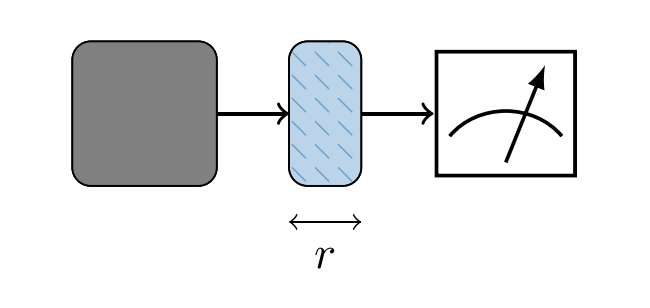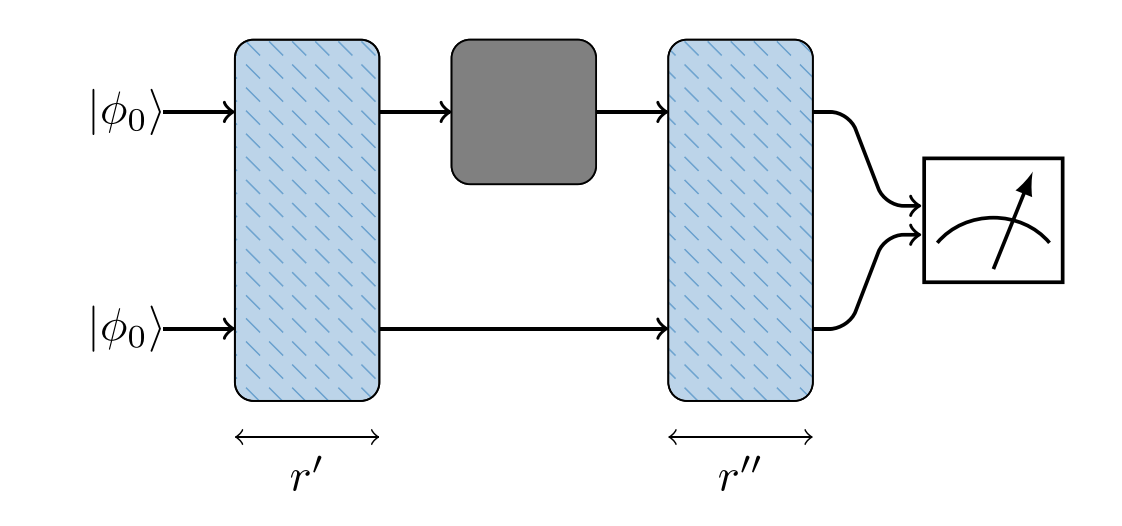Brandão, F. G. S. L., Chemissany, W., Hunter-Jones, N., Kueng, R., & Preskill, J. (2021). Models of Quantum Complexity Growth. PRX Quantum, 2(3), 1. https://doi.org/10.1103/prxquantum.2.030316
The paper provides a relation between the approximate designs and the quantum complexity.
Definition of the Quantum Complexity
Def 1 (Strong State Complexity): The complexity of a quantum state
is the minimal circuit size required to implement an ancilla-assisted measurement that is capable of distinguishing from the maximally mixed state .
Pictographic illustration:
Black box:
Blue boxes: preprocessing circuits involving
We say that the state has complexity less than
The optimal: $\beta{QC} (r,|\psi \rangle) \to 1-\frac{1}{d}
Def 2 (Strong Unitary Complexity): The complexity of a quantum circuit U is the minimal circuit size required to implement an ancilla-assisted measurement that is capable of distinguishing
from the completely depolarizing channel .
Pictographic illustration:
Black box:
Blue boxes: pre- and postprocessing circuits involving
We say that the unitary has complexity less than
The optimal: $\beta{QC} (r,U) \to \frac{1}{2} |\mathcal U -\mathcal{D}|{\diamond} = 1-\frac{1}{d^2}, r \to \infty
Complexity by Design
Theorem 1 (State Complexity Growth): Consider the set of (pure) states in
distinct states that obey
Qualitatively, the number is
Theorem 2 (Unitary Complexity Growth): A discrete approximate 2k-design in
distinct states that obey
Qualitatively, the number is